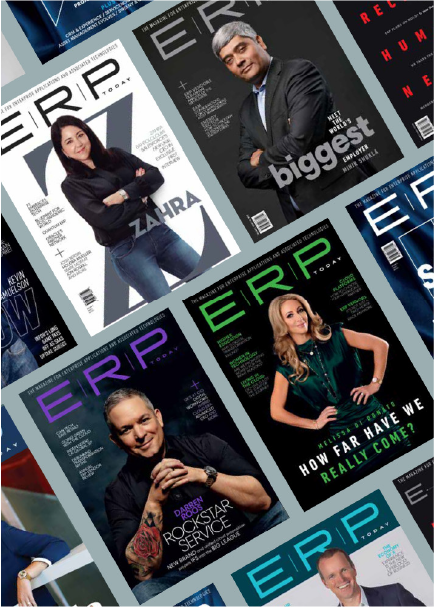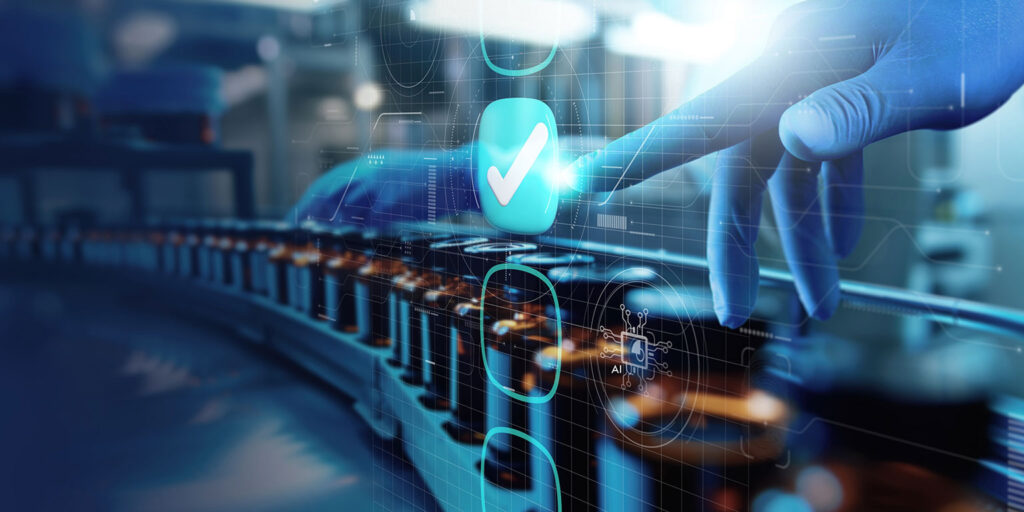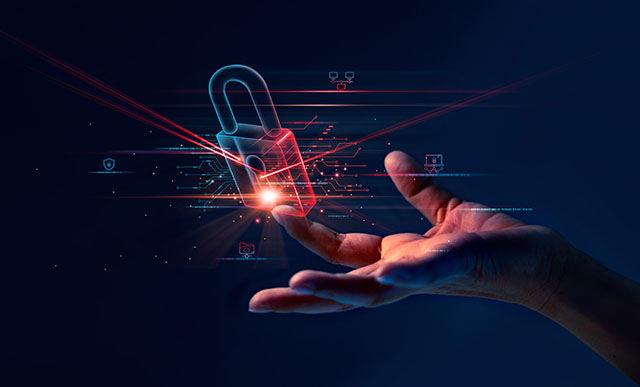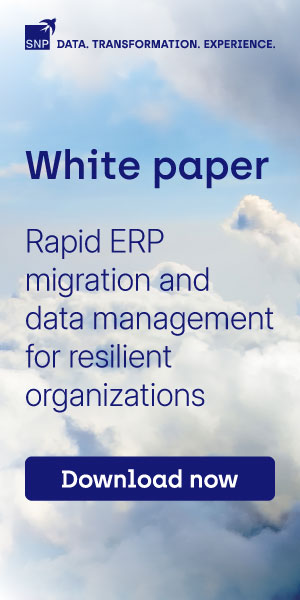As digital transformation accelerates, organizations are finding themselves at the center of a rapidly evolving ERP landscape. For CIOs, IT leaders, and enterprise architects, choosing the right ERP system is a strategic opportunity to redefine how technology delivers business value. This makes it crucial for technology leaders to navigate modernization challenges, leveraging their ERP system’s expanding platform ecosystem, and preparing their teams for what comes next.
Facing the Crossroads of ERP Modernization
The path to a modern ERP environment is often paved with uncertainty. At the heart of many transformation conversations is the move to cloud-based ERP, which promises streamlined adoption and business innovation—but the journey is far from linear.
Nick Miletich, COO at Proterra, summarizes the core challenge: “I would say the biggest challenge and the biggest conversations we continually have is about how to navigate this journey.” For many organizations, aligning legacy systems, cloud readiness, and business goals introduces both technical and strategic friction.
SAP customers, for example, must manage the integration of SAP S/4HANA or RISE with SAP, SAP Business Technology Platform (BTP), as well as newly introduced offerings such as SAP Business Data Cloud. The combination of these solutions can introduce complexity that often overwhelms customers. As Miletich explains, “Some clients haven’t even started using cloud-based data stores. This makes the jump to multiple new solutions a big pill to swallow. And they come to us to talk through what that journey is going to look like.”
Steele Arbeeny, North American CTO at SNP, points to another pressing issue: articulating the value of modernization efforts. “You need a better story than that,” he says, referring to the difficulty in justifying investment when the visible gains may seem incremental. “It’s a struggle to connect that story to the size of the investment.”
Strategic Modernization: Start Small, Think Big
To avoid analysis paralysis, many leaders are adopting phased, pragmatic approaches to transformation. According to Miletich, “A lot of clients automatically expect that it is necessary to update underlying data platforms, ERP systems, and infrastructure at the same time. And that’s not the case.” Instead, 80% of Proterra’s work involves gradual steps—starting with an initial move to cloud-based infrastructure, then layering in an ERP update and introducing modern development principles.
This modular mindset also aligns with SNP’s “selective migration” approach. As Arbeeny explains, organizations can “pick and choose what you want to migrate and what you don’t,” allowing for surgical modernization while optimizing cost, time, and impact.
The Power of Platform, Data, and Business AI
ERP vendors today are doing more to expand their platform ecosystems, reshaping how organizations build digital capabilities. However, even when the solutions offered are fully managed software-as-a-service offerings, Miletich points out that “you still need technical teams to do what we would consider standard administrative tasks,” reinforcing the need for clear ownership and skills alignment across technical teams.
Data strategy is becoming a linchpin of the ERP modernization roadmap. This is because having cleansed and harmonized data is a vital part of centralization projects and preparation for future innovation. But organizations are also looking to ensure that they aren’t replicating data unnecessarily. This shift reduces latency and improves data integrity across systems.
It also lays the groundwork for business-grade AI, where contextually trained algorithms operate on real-time data, not stale extracts. But as Arbeeny warns, “If your data isn’t good, you’re not going to get value out of it.” Modernization is the moment to cleanse, archive, and reshape data into an AI-ready foundation.
Partnering for Progress
Technology partners remain essential allies in executing digital strategy. Miletich highlights their indispensable role: “The augmentation and innovation of what the partners bring has been absolutely beneficial to everything we’ve done.” From strategy and compliance to migration and integration, experienced partners offer the vertical expertise and solution depth that ERP customers need to accelerate value realization.
As Arbeeny notes, partners are often the crucial translators between the ERP vendor and customer business needs: “Here’s how we can use data from the ERP system, data from other systems, and third-party data to make this end result better.”
Rethinking Skills for the Modern Professional
In this hybrid future, IT professionals must evolve. Traditional skills—like ERP administration—remain relevant, even as new capabilities like managing cloud platforms and enterprise architecture gain prominence.
Cloud-based ERP offers streamlined adoption and business innovation, but the journey is far from linear.
“The cloud skill set I think is going to be the hot commodity,” says Miletich, citing the need to monitor resource usage, manage environments, and optimize connectivity. Other industry experts are focused on the value brought by enterprise architecture which bridges technologies to deliver real business value and is tremendously important when most organizations are running solutions from multiple vendors in a variety of landscapes.
Importantly, Arbeeny calls out the enduring importance of functional insight: “What is the customer doing?
How can we improve the customer journey with all these tools, right?”
Act with Purpose, Engage with Strategy
For organizations still in deliberation, the message is clear: delay only increases risk. Miletich encourages teams to understand and grasp the changes that are occurring within ERP systems today. Having that knowledge is key to planning for future innovation. The journey can be taken in phases, but there must be a starting point.
Arbeeny adds a final note of focus: “Start with doing it for the right reason. Everything should begin with a value discussion.” By grounding transformation efforts in business outcomes, ERP leaders can avoid tech-for-tech’s-sake initiatives and chart a path that aligns IT execution with enterprise growth. ERP modernization is not a single project—it’s an ongoing commitment to agility, intelligence, and innovation. Whether simplifying the core, embracing cloud platforms, activating business AI, or building a future-proof workforce, success requires proactive engagement, clear business alignment, and trusted partners. As ERP ecosystems continue to evolve, technology leaders who act with clarity and conviction will be best positioned to turn transformation into sustained advantage.
What This Means for ERP Insiders
Prioritize a Phased Approach to ERP Modernization. Avoid the trap of “big bang” transformations. Instead, break your ERP modernization journey into manageable phases. Begin by enhancing cloud readiness, then layer in an ERP upgrade or initiatives that will streamline manageability over time. This approach reduces risk, accelerates time to value, and aligns better with resource availability and organizational readiness.
Build a Unified Data Strategy to Unlock AI Potential. Invest early in data quality, governance, and integration—especially if AI or business analytics are part of your roadmap. Leverage enterprise platforms to eliminate replication, enable real-time visibility, and extend insights beyond just the ERP system. Clean, well-structured data is foundational to realizing meaningful business outcomes from AI and automation initiatives.
Engage Partners Strategically for Transformation Expertise. Partners bring critical experience, industry-specific knowledge, and technical capabilities to navigate complex migrations, integration efforts, and new platform adoption. Collaborate closely with partners who understand your business model and can help translate evolving offerings into clear, executable value-driven strategies.






